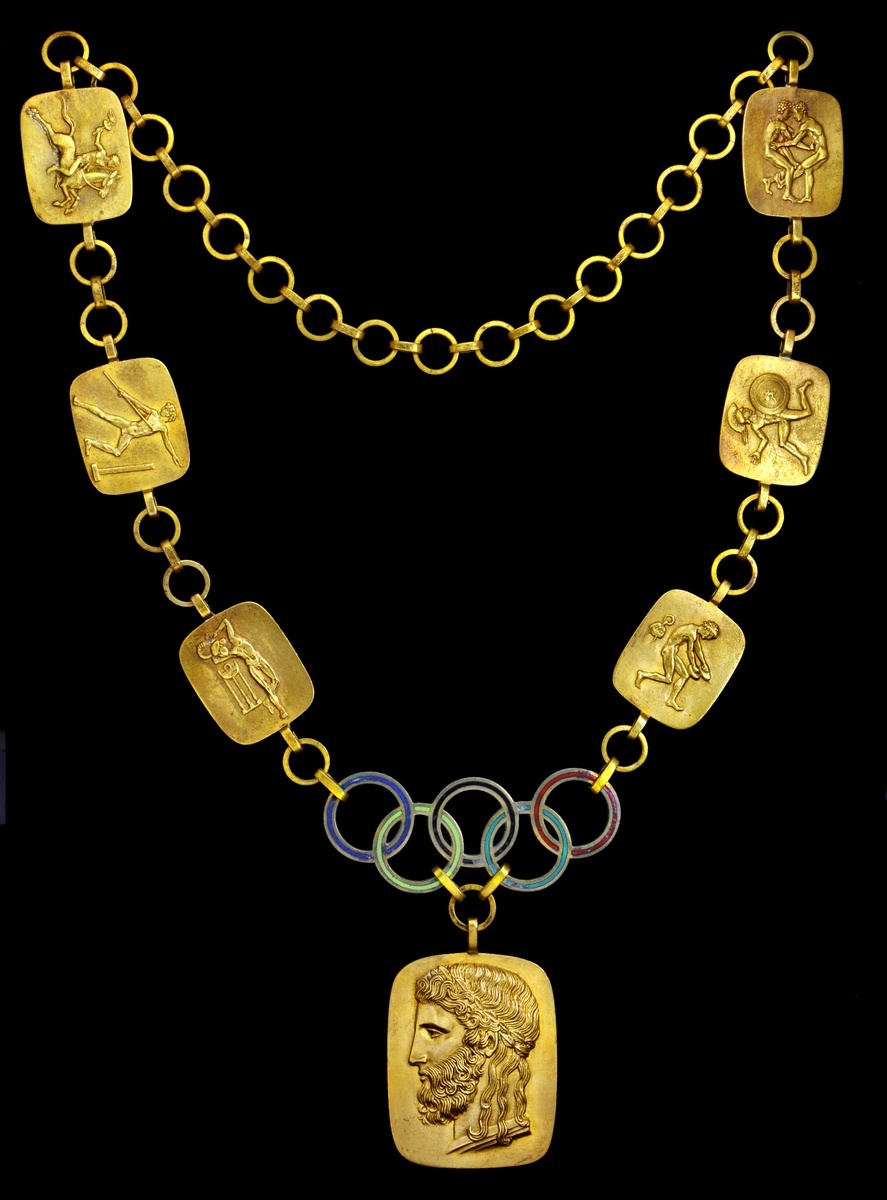
Auction: 18003 - Orders, Decorations and Medals
Lot: 694
An exceptionally rare and historically important International Olympic Committee Collar Chain of Office
International Olympic Committee, Gold Collar Chain of Office, by W. E. Lemcke, comprising 7 medallions, the central medallion of the Olympic rings with maker's name to reverse and surrounded by those depicting discus throwers, javelin throwers, torch bearers, two wrestlers, an armed runner and a jumper, each in the classical style, 895mm, gilt and enamel, with Badge Appendant depicting Zeus and with the inscription 'XI Olympiade Berlin 1936' to the reverse, together with space for ten further Olympic games, cleaned, minor enamel chipping, otherwise very fine and of great rarity
Provenance:
From the estate of the late Major W. E. St. John Turner, C.D., Canadian Army. A prolific weightlifter, Turner served in North-West Europe during Second War; sold together with an album of original material, including various Canadian Expeditionary Force identity passes and a quantity of weightlifting images and certificates.
At the first Olypiad of 1896, I.O.C. Members and Offcials received a badge, whilst subsequent editions also distributed cloth or metal tokens in a similar nature. It had first been discussed at the 1934 Athens Congress that a longer-lasting badge of office should be instituted. As such, the IOC authorised the production of insignia to be worn by the Members at each games. Walte E. Lemcke was thus commissioned to make the Chains of office in time for the 1936 Games. Inspired by classical art, he was ordered to manufacture just 60 Chains (despite their being 67 Members at the time), of which 50 were issued to those Members present at the Games. After the Games, the Chains themselves were to be returned to the I.O.C. in Lausanne. Following the 1937 Warsaw meeting however, it was decided the Chains - together with the Olympic flag - would remain in the host city until the next Olympiad.
Throughout the Second War the Chains remained in a safe in a Berlin bank together with the Olympic flag. With the capitulation of Germany, the attempted reclamation of the Olympic objects was made. A letter from the period states:
'...the flag was in an inconspicuous chest with nine of the 60 Chains.'
The British (on behalf of the I.O.C.) attempted to reclaim the items only to discover the chest was located in the Soviet sector of Berlin. A German source claimed the Chains had been sent to Moscow to be melted to establish their metal content, with just six remaining in existence.
Either way, to date just two examples have been traced for sale at auction, besides a handful in institutions.
An endless Olympic Chain, Karl Lennartz, refers.
Subject to 20% VAT on Buyer’s Premium. For more information please view Terms and Conditions for Buyers.
Sold for
£9,000




